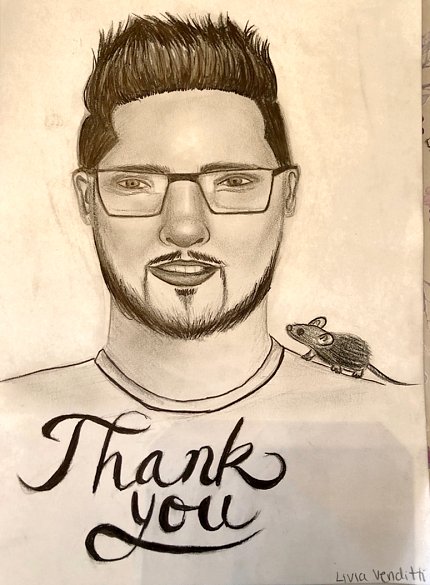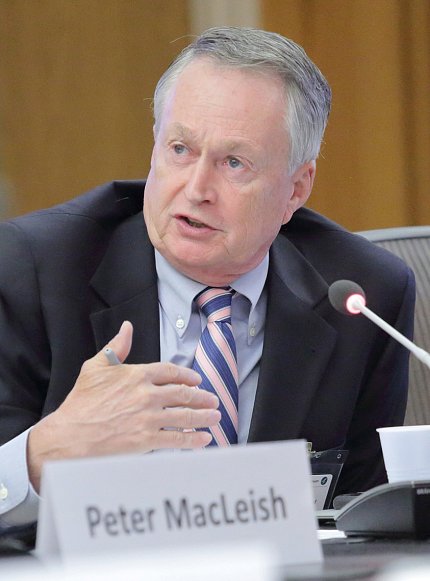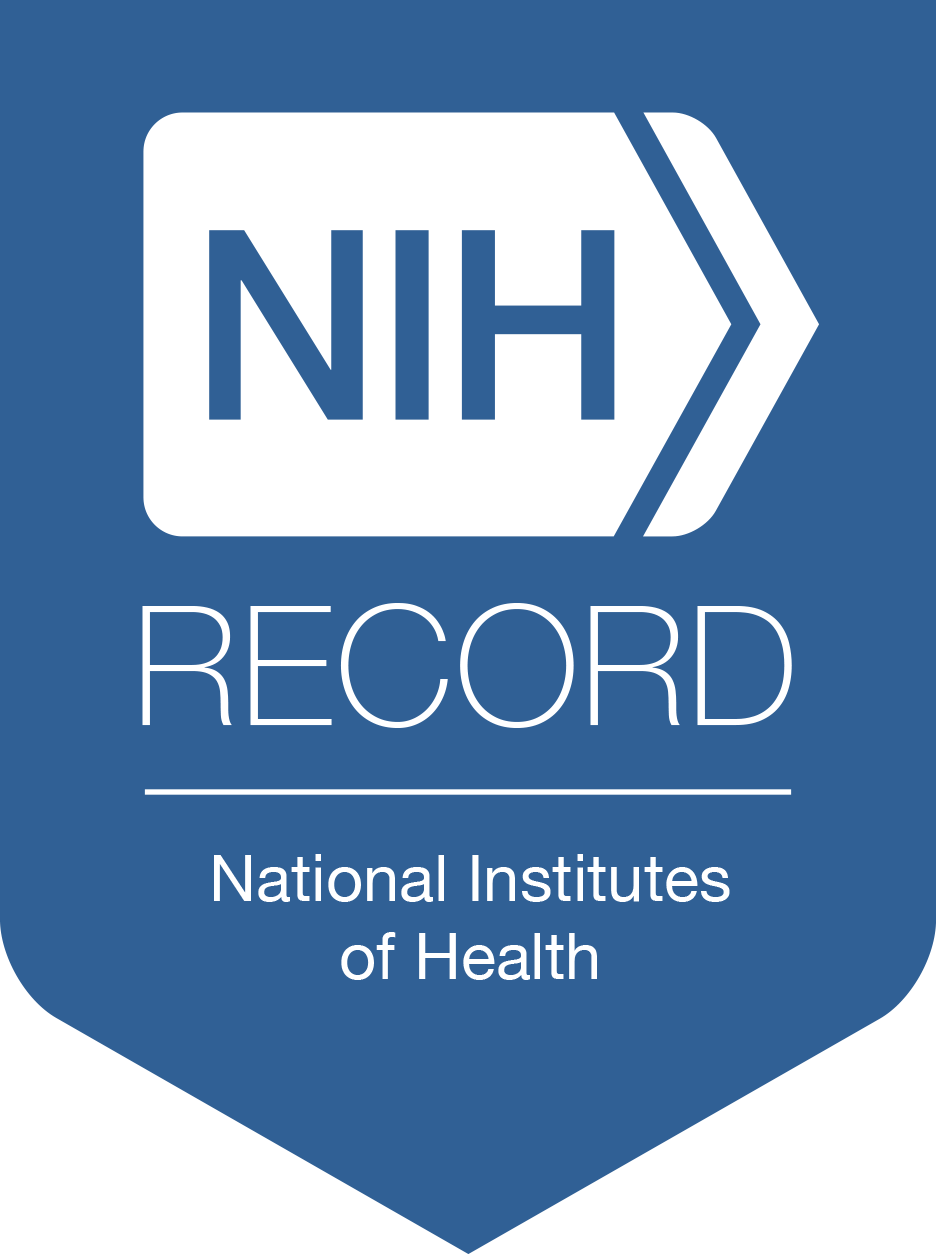ARPA-H Listening Sessions Set
In July and August, NIH, in collaboration with the White House Office of Science and Technology Policy, is organizing a series of listening sessions with the science community to get feedback from patient advocacy groups, industry, scientific professional organizations and other stakeholders to inform the planning process for ARPA-H. Meetings are open to those who want to register.
Sessions will vary in format from broad, public discussions to smaller, invitation-only meetings to discuss more sensitive information.
Materials from the sessions, including agendas, summaries, presentations and videos will be posted on the ARPA-H website, as applicable.
Videocasts of open meetings that took place before July 26 are available here: https://www.nih.gov/arpa-h/events.
Information on Listening Sessions:
- July 26 | 2:15-3:30 p.m. ET Ophthalmology, Deafness and Communication Disorders, and Dental and Craniofacial Disorders
Register https://nih.zoomgov.com/webinar/register/WN_xyOCRlVhQNOEHkPbYZMvqA
- July 30 | 9-10:15 a.m. ET Minority Health and Health Disparities, and Nursing
Register https://nih.zoomgov.com/webinar/register/WN_DmDWe5pLQP2x6esau3LgXQ
- Aug. 2 | 9-10:15 a.m. ET Addiction and Alcoholism
Register https://nih.zoomgov.com/webinar/register/WN_WdrYgSdLQY-dJdMKJ-lhvQ
- Aug. 3 | noon-1:15 p.m. ET Diabetes, Digestive Disorders and Kidney Disease, Child and Maternal Health, and Complementary and Integrative Medicine
Register https://nih.zoomgov.com/webinar/register/WN_ENGS22LEQdSBNTm5fZz-rQ
- Aug. 4 | 2-3:15 p.m. ET Biomedical and Translational Research and General Medicine
Register https://nih.zoomgov.com/webinar/register/WN_GPE5ldIBRdiicRBZgAbftQ
- Aug. 5 | 10:30-11:45 a.m. ET Allergies and Infectious Diseases, and Global Health
Register https://nih.zoomgov.com/webinar/register/WN_uqEpOrDvSfmcmpPha0G5WA
- Aug. 11 | noon-11:15 p.m. ET Genomics, Biomedical Engineering and Imaging, and Health Informatics, and Medical Libraries
Register https://nih.zoomgov.com/webinar/register/WN_u0tOSwDyRQagCIpIjc-fnw
- Aug. 16 | 2:30-3:45 p.m. ET Neurology and Mental Health
Register https://nih.zoomgov.com/webinar/register/WN_FZQ8HVvlQ8GrNmCX5mYAiQ
‘He Listened…He Cared’
In Lab Tour, Biden Connects with Scientists

Photo: Chia-Chi Charlie Chang
When President Biden visited the Dale and Betty Bumpers Vaccine Research Center at NIH on Feb. 11, VRC deputy director Dr. Barney Graham and research fellow Dr. Kizzmekia Corbett described various aspects of vaccine development science.
“I showed a 3C model of the whole virus to show how the spike molecule was on the virus surface,” Graham recounted. “I then showed a 10 million X-enlarged 3D model of the spike protein. I had other models of the prefusion and postfusion forms of RSV F and some of our new nanoparticle designs for influenza, but didn’t have time for those.”
Corbett talked about how her group decided on the protein sequence for making the spike protein in different forms for assay development, cryoelectron microscopy, probes for antibody discovery and vaccine.
“[We] designed the vaccine insert sequence [over a weekend],” Corbett recalled.
In response to the science blitz and research briefing, Biden inquired about how the investigators themselves were coping.
“He was interested in our personal experience and our families’ experience of going through this pandemic response over the last year,” Graham noted. “He listened and he cared. At the end of the lab tour I mentioned that my wife (Dr. Cynthia Turner-Graham) and grandson (D.J.) both asked me to say hello from them. [The President] pulled out his cell phone and asked for my wife’s number, then called her and proceeded to have a 5- to 10-minute call with her while everyone else waited.”

Photo: Chia-Chi Charlie Chang
This is the second meeting with a U.S. President in less than a year for Graham and Corbett. They met with President Trump on Mar. 3, 2020. Graham’s work has placed him in this position several times over the last couple of decades.
“I had the opportunity to meet with President Obama in December 2014, when he came to thank us for our work on Ebola during the West African outbreak,” Graham recalled. He also met with President Bush who visited in 2003 to learn about VRC work post-9/11.
What stood out for Corbett was “POTUS ad hoc calling Dr. Graham’s wife for casual conversation and gifting us with the POTUS challenge coin.”
“I never imagined meeting an active president as a research fellow,” she said.
Leading by Example
Collins, Fauci, McGowan Complete Vaccination Process

Photo: Chia-Chi Charlie Chang
PHS Cdr. Ick-Ho Kim of NHLBI administered second doses of the Moderna Covid-19 vaccine to NIH director Dr. Francis Collins, NIAID Dr. Anthony Fauci and Office of Research Services Director Colleen McGowan on Jan. 19 in the B-1 cafeteria of the Clinical Center.
First doses were given Dec. 22.
In addition, all of the health care workers who were scheduled to receive their second shot also completed the vaccination process Jan. 19.
As Fauci pointed out at a recent virtual town hall, showing up for both vaccination appointments is vital to success of the immunization effort.
Grantee Shares Nobel Prize in Chemistry

Photo: Bill Branson
Dr. Jennifer Doudna, a biochemist with the University of California, Berkeley, and a genome editing pioneer, has received the 2020 Nobel Prize in Chemistry “for the development of a method for genome editing.” She has had continuous NIH funding since 1997 from NIGMS, NIAID and NHGRI.
She shares the honor with Dr. Emmanuelle Charpentier, a French microbiologist and a fellow genome editing pioneer with the Max Planck Unit for the Science of Pathogens, Berlin, Germany.
According to the Royal Swedish Academy of Sciences, Doudna and Charpentier “have discovered one of gene technology’s sharpest tools: the CRISPR/Cas9 genetic scissors. Using these, researchers can change the DNA of animals, plants and microorganisms with extremely high precision. This technology has had a revolutionary impact on the life sciences, is contributing to new cancer therapies and may make the dream of curing inherited diseases come true.”
“There is enormous power in this genetic tool, which affects us all,” said Claes Gustafsson, chair of the Nobel committee for chemistry. “It has not only revolutionized basic science, but also resulted in innovative crops and will lead to ground-breaking new medical treatments.”

The academy continued, “Since Charpentier and Doudna discovered the CRISPR/Cas9 genetic scissors in 2012, their use has exploded. This tool has contributed to many important discoveries in basic research, and plant researchers have been able to develop crops that withstand mould, pests and drought. In medicine, clinical trials of new cancer therapies are underway, and the dream of being able to cure inherited diseases is about to come true. These genetic scissors have taken the life sciences into a new epoch and, in many ways, are bringing the greatest benefit to humankind.”
Dozens of NIH-supported scientists from around the world have received Nobel prizes for their groundbreaking achievements in physiology or medicine; chemistry; physics; and economic sciences. To date, 163 NIH-supported researchers have been sole or shared recipients of 96 Nobel prizes.
Sketch Amid Shutdown
Research Champion Immortalized

Dr. Charles Venditti’s NHGRI lab includes a translational research program that conducts natural history studies on rare metabolic disorders. A large part of their work involves breeding and treating very sick—and very valuable—mice. It’s a vital research component that is difficult to halt mid-stream—even when a pandemic unexpectedly comes calling. Fortunately, devoted animal caretakers like Darwin Romero, a Kelly contractor to NHGRI and Venditti lab mouse technician, rose to the occasion.
“Our mouse technician has just been an absolute hero for our research program,” Venditti said. “He’s in there saving our precious mice, even on weekends. Helping us with our critical gene therapy experiments. Acting as a missionary for our scientists to help them try to keep the science going remotely. It’s been amazing to see people step up and we’ve made real progress, despite the covid crisis, because of his efforts.”

So impressed with Romero’s work ethic was Venditti that his enthusiastic praise while teleworking inspired his youngest daughter, Livia, an artist, to render a portrait of the tech. The scientist plans to present the portrait to the aptly named science technician Darwin soon.
“Without the tireless efforts of our animal caretakers/vets and especially mouse technicians—like Darwin in this time of crisis—our precious animal disease models, and eventually the patients they help, would have been utterly decimated,” Venditti concluded.
Clinical Center Prepared to Deal with Coronavirus Patients, Gilman Says

Photo: Rich McManus
As cases continue to surge nationwide, the Clinical Center is well equipped to take care of coronavirus patients, said Clinical Center CEO Dr. James Gilman.
“We have the facilities to take care of the patients, but our fundamental mission is research so that’s the backdrop for anything else that happens here,” he said.
Supporting NIH researchers as they work toward bringing treatments and a vaccine from bench to bedside, the Clinical Center is currently one site of a multi-center clinical trial of a potential drug for coronavirus patients. The hospital began accepting such patients on Mar. 24, when two research participants began a randomized, controlled NIAID clinical trial of the antiviral remdesivir.
In preparation for this eventuality, the CC recently took stock of its quarantine capacity. There are a total of 11 rooms in strict, airborne isolation: 7 in the special clinical studies unit and 4 inpatient rooms. These rooms meet optimum quarantine standards: negative pressure to outside air, HEPA filters and anterooms where staff can safely put on and remove personal protective equipment such as gowns and masks.
“Eleven is the number of patients, in terms of our facilities, that we could take care of the best,” said Gilman, adding that there are additional, negative-pressure rooms that could house patients.
At the local level, the CC, which often collaborates with Walter Reed National Military Medical Center and Suburban Hospital, may expand that relationship to take in some of their coronavirus patients should the need arise during this viral pandemic. An agreement among the three hospitals, drafted after 9/11 and renewed ever since, fosters an even greater exchange in the event of a natural disaster or other national emergency, said Gilman.
“We have contingency resources for taking care of patients who may have to come to us from Suburban or Walter Reed,” he said.
The hospital’s leadership has been preparing for this pandemic at a precipitous pace. They engage in multiple meetings daily, making quick decisions and problem-solving as they go along. Gilman likened the pace to that of a critical military operation.
“I’ve been a physician over 40 years, and I’ve been through some pretty interesting times, including a lot of time in the Department of Defense taking care of young men and women [injured in battle], but I’ve never been through anything like this,” he said. “I have a lot of experience with military operations and I would say that the pace here equals that of even the most well-organized military exercises and operations.”
In addition to preparing for coronavirus patients and protocols, the CC is making significant changes every few days to help protect patients and staff while providing optimal patient care. One such change is updating its visitor policy.
“We’ve begun to tighten the visitor policy significantly, with the idea that we will tighten it even further should we have to,” said Gilman.
As of mid-March, the CC was limiting each inpatient, even children, to one visitor at a time.
“It cuts down on the number of people we have to screen,” said Gilman, “and helps protect not only our vulnerable patients but also our staff.”
And, since Mar. 13, all patients and visitors entering the CC are screened for symptoms at the door [this policy became mandatory for all entrants to Bldg. 10 later in the month]. Staff who have a fever or other coronavirus symptoms first get screened by the Occupational Medical Service; some then get tested.
“Our department of laboratory medicine has done a great job of developing the ability to test patients and staff,” said Gilman.
“We will do whatever the NIH, HHS or national leadership decides,” he concluded.
Through Jan. 13
NLM’s ‘Fire and Freedom’ Exhibit on Display

The National Library of Medicine’s “Fire and Freedom: Food and Enslavement in Early America” will be on display to the public in the NLM History of Medicine Division reading room on the first floor of Bldg. 38 through Friday, Jan. 13. In addition, 50 cultural institutions across the country will host a traveling banner version (shown above) that NLM made available free of charge over the next 4 years.
Find other places to see it in person at Exhibit. You can also visit an online adaptation.
Zika Virus Threat Grows

The Zika outbreak continues to spread—and its effects worsen—since the virus re-emerged last year in Latin America and the Caribbean, according to NIAID director Dr. Anthony Fauci, who teamed with NICHD acting director Dr. Catherine Spong to update day 2 of ACD on NIH’s efforts to address the outbreak.
As of June, 48 countries/territories—39 in the Americas/Caribbean—have active Zika virus transmission. The virus itself is considered relatively mild and most infected individuals recover from it within days, Fauci explained. However, devastating Zika-associated birth defects, a potential link to Guillain-Barré syndrome, Zika’s capability of being transmitted sexually and other as yet unknown health effects due to the infectious disease have escalated it as a top global research priority and health threat.
“The impact on pregnancy goes far beyond what we’re seeing with microcephaly,” Spong said. “Many gaps exist about what to expect in pregnancy. We need more data.”
Several vaccine development trials are in various stages of being launched by NIAID with collaborating institutions. In addition, NIAID, NICHD and NIEHS have partnered on a Zika in Infants and Pregnancy (ZIP) trial of up to 10,000 participants to identify and document the virus’s effects on pregnant women and their fetuses and infants.
Zika update slides are online at http://acd.od.nih.gov/presentations/062016_Fauci.pdf and http://acd.od.nih.gov/presentations/062016_Spong.pdf.
Drilling Down on Grant Disparity

Photo: Ernie Branson
Diversity in the scientific workforce became a concern several years ago and rose on the ACD’s agenda after release in 2011 of the NIH-commissioned Ginther study, which found that African-American/black (AA/B) applicants were less likely than whites to be awarded R01 grants from NIH during fiscal years 2000 to 2006.
An ACD-assigned working group on AA/B funding disparities followed up on Ginther, analyzing data from fiscal years 2010 to 2015.
AA/B submit fewer applications, fewer applications per AA/B applicant are submitted and fewer of their applications get discussed, AA/B applications are scored lower and fewer resubmissions come from that community. Cumulatively, the odds of an AA/B scientist being funded are 35 percent less than for a white scientist.
Summarizing key findings by a core team from that group, NIH chief officer for scientific workforce diversity Dr. Hannah Valantine said, “There is a disparity in every stage of the application from submissions to funding…This work needs to continue to be done and NIH needs to continue a vigilant eye on the issue.”

Photo: Ernie Branson
Valantine’s working group recommended several interventions to narrow the gap, including targeted mentoring/coaching on submissions. Also, the group initiated with the Center for Scientific Review an anonymized application study—a randomized controlled trial—to determine potential bias in peer review.
Collins said NIH has funded many programs over many decades to recruit more underrepresented minorities into science, and that success of past efforts has been difficult to gauge because “they were often not conducted in a rigorous way where you can tell what happened.
“We’re not going to do it that way any more,” he stressed. “We’re determined…We will expand the things that are working and we will kill the ones that are not.”
Valantine’s ACD slides are online at https://acd.od.nih.gov/documents/presentations/06092016Valantine.pdf.
Recommendations by ‘Red Team’ Set in Motion

Photo: Ernie Branson
The Red Team, a working group assembled by the ACD to evaluate the hospital following a problem last year in the CC pharmaceutical development section, reported findings at a special ACD meeting in April.
“Our current structure—the way that we currently attempt to manage the Clinical Center—makes it very difficult to achieve our end result,” said NIH principal deputy director Dr. Lawrence Tabak, giving context for the first major realignment of CC governance since the largest research hospital in the world opened.
Outlining three guiding themes—all with the overarching principle to “fortify a culture and practice of safety”—Tabak gave an update on progress NIH has made on the report’s recommendations:
-
A central Office of Research Support and Compliance was formed to set policy and standards and assure quality; Dr. Kathryn Zoon was appointed as its interim director.
-
A CEO position was established with authority over all NIH staff using the hospital; a search committee to fill the post will be co-chaired by NIAID director Dr. Anthony Fauci and NIAMS director Dr. Stephen Katz.
-
A clinical practice committee composed of senior clinical and lab experts is forming, to provide real-time input to leadership on patient care and safety.
-
A new external hospital board will hold its first meeting in July.
“Science and safety must go hand in hand,” Tabak emphasized. “There can’t ever be tradeoffs between innovation and safety and compliance. Our collective goal will be to exceed—not just meet—all safety and compliance standards and become a leader in the discipline of safety science.”
See the Red Team implementation slides at https://acd.od.nih.gov/documents/reports/06092016report-RedTeam.pdf.
